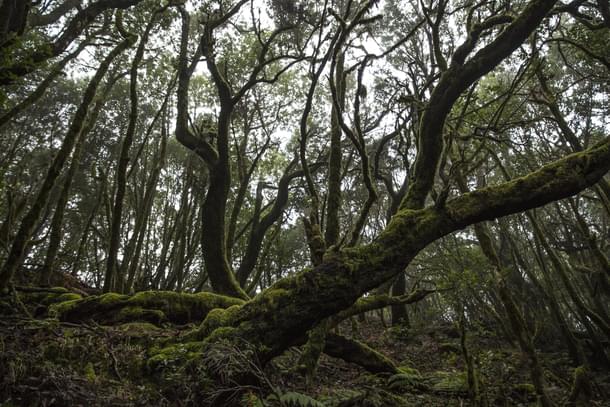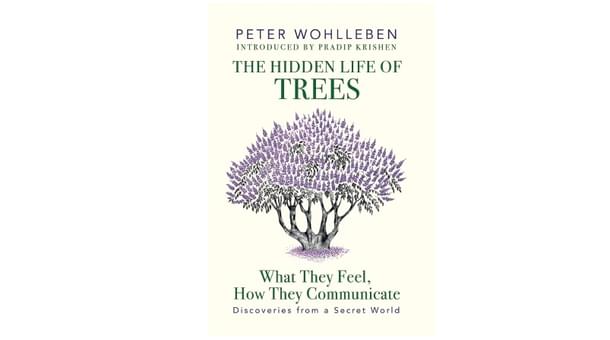Books
Trees Have Lives Beyond What We Think We Know
Book Excerpts
Apr 30, 2017, 05:42 PM | Updated 05:42 PM IST
Save & read from anywhere!
Bookmark stories for easy access on any device or the Swarajya app.


If we thought social networking was only what humans or animals indulged in, we can be happily surprised to discover that one of the most static creatures that stay ‘rooted’ to the ground quite literally, trees, are equally social.
Trees mix, mingle and make merry, and have family issues to ponder on. Strange but true as explained by forester and author Peter Wohlleben, they make love too, and importantly with consent. “Before they bloom, they agree among themselves.”
Peter Wohlleben’s book The Hidden Life of Trees: What They Feel, How They Communicate – Discoveries from a Secret World includes an account of how trees breed and that there is more to it than just vegetative reproduction that we have all heard of in our science classes.
Here is an excerpt from the book:
When beeches and oaks put blooming on hold for a number of years, this has grave consequences for insects, as well – especially for bees. It’s the same for bees as it is for wild boar: a multi-year hiatus causes their populations to collapse. Or, more accurately, could cause them to collapse, because bees never build up large populations in deciduous forests in the first place. The reason is that true forest trees couldn’t care less about these little helpers. What use are the few pollinators left after barren years when you then unfurl millions upon millions of blossoms over hundreds of square miles? If you are a beech or an oak, you have to come up with a more reliable method of pollination, perhaps even one that doesn’t exact payment. And what could be more natural than using the wind? Wind blows the powdery pollen out of the blossoms and carries it over to neighbouring trees. The wind has a further advantage.
It still blows when temperatures fall, even when they drop below 53 degrees Fahrenheit, which is when it gets too chilly for bees and they stay home. Conifers bloom almost every year, which means bees are an option for pollination because they would always find food. However, conifers are native to northern forests, which are too chilly for bees to be out and about while the trees are blooming, and that is probably why conifers, like beeches and oaks, prefer to rely on the wind. Conifers don’t need to worry about taking breaks from blooming, like beeches or oaks, because they have no reason to fear deer and wild boar. The small seeds inside the cones of Spruce & Co. just don’t offer an attractive source of nutrition. True, there are birds such as red crossbills, which pick off cones with the tips of their powerful crossed bills and eat the seeds inside, but in general, birds don’t seem to be a big problem. And because there is almost no animal that likes to store conifer seeds for winter food, the trees release their potential heirs into the world on tiny wings. Thus equipped, their seeds float slowly down from the tips of their branches and can easily be carried away on a breath of wind.
Spruce & Co. produce huge quantities of pollen, almost as though they wanted to outdo deciduous trees in the mating department. They produce such huge quantities that even in a light breeze, enormous dusty clouds billow over coniferous forests in bloom, giving the impression of a fire smouldering beneath the treetops. This raises the inevitable question about how inbreeding can be avoided in such chaotic conditions. Trees have survived until today only because there is a great deal of genetic diversity within each species.

If they all release their pollen at the same time, then the tiny grains of pollen from all the trees mix together and drift through the canopy. And because a tree’s own pollen is particularly concentrated around its own branches, there’s a real danger its pollen will end up fertilising its own female flowers. But, as I just mentioned, that is precisely what the trees want to avoid. To reduce this possibility, trees have come up with a number of different strategies.
Some species – like spruce – rely on timing. Male and female blossoms open a few days apart so that, most of the time, the latter will be dusted with the foreign pollen of other spruce. This is not on option for trees like bird cherries, which rely on insects. Bird cherries produce male and female sex organs in the same blossom, and they are one of the few species of true forest trees that allow themselves to be pollinated by bees. As the bees make their way through the whole crown, they cannot help but spread the tree’s own pollen. But the bird cherry is alert and senses when the danger of inbreeding looms.
When a pollen grain lands on a stigma, its genes are activated and it grows a delicate tube down to the ovary in search of an egg. As it is doing this, the tree tests the genetic make-up of the pollen and, if it matches its own, blocks the tube, which then dries up. Only foreign genes, that is to say, genes that promise future success, are allowed entry to form seeds and fruit. How does the bird cherry distinguish between ‘mine’ and ‘yours’? We don’t know exactly.
What we do know is that the genes must be activated, and they must pass the tree’s test. You could say, the tree can ‘feel’ them. You might say that we, too, experience the physical act of love as more than just the secretions of neurotransmitters that activate our bodies’ secrets, though what mating feels like for trees is something that will remain in the realm of speculation for a long time to come.
Excerpted from The Hidden Life of Trees: What They Feel, How They Communicate - Discoveries from a Secret World, by Peter Wohlleben, Penguin Random House India, 2016, with permission of the publisher.




